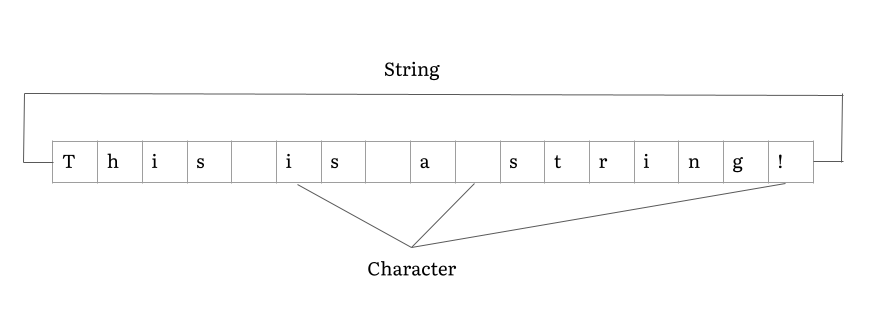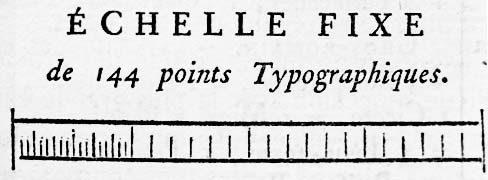|
Glyph Bitmap Distribution Format
The Glyph Bitmap Distribution Format (BDF) by Adobe is a file format for storing bitmap fonts. The content takes the form of a text file intended to be human- and computer-readable. BDF is typically used in Unix X Window environments. It has largely been replaced by the PCF font format which is somewhat more efficient, and by scalable fonts such as OpenType and TrueType fonts. Overview the current version of BDF is 2.2. No future revisions are anticipated. Earlier versions were referred to as the Character Bitmap Distribution Format. In 1988, the X Consortium adopted BDF 2.1 as a standard for X Window screen fonts, but X Windows has largely moved to other font standards such as PCF, Opentype, and Truetype. Version 2.2 added support for non-Western writing. For example, glyphs in a BDF 2.2 font definition can specify rendering from top-to-bottom rather than simply left-to-right. A BDF font file contains three sections: #a global section that applies to all glyphs in a font ... [...More Info...] [...Related Items...] OR: [Wikipedia] [Google] [Baidu] |
Adobe Systems
Adobe Inc. ( ), originally called Adobe Systems Incorporated, is an American multinational computer software company incorporated in Delaware and headquartered in San Jose, California. It has historically specialized in software for the creation and publication of a wide range of content, including graphics, photography, illustration, animation, multimedia/video, motion pictures, and print. Its flagship products include Adobe Photoshop image editing software; Adobe Illustrator vector-based illustration software; Adobe Acrobat Reader and the Portable Document Format (PDF); and a host of tools primarily for audio-visual content creation, editing and publishing. Adobe offered a bundled solution of its products named Adobe Creative Suite, which evolved into a subscription software as a service (SaaS) offering named Adobe Creative Cloud. The company also expanded into digital marketing software and in 2021 was considered one of the top global leaders in Customer Experience Manageme ... [...More Info...] [...Related Items...] OR: [Wikipedia] [Google] [Baidu] |
Cap Height
In typography, cap height is the height of a capital letter above the baseline for a particular typeface.http://pfaedit.sourceforge.net/glossary.html Glossary of (some) Typographic Terms It specifically is the height of capital letters that are flat—such as H or I—as opposed to round letters such as O, or pointed letters like A, both of which may display overshoot. The height of the small letters is the x-height upright 2.0, alt=A diagram showing the line terms used in typography In typography, the x-height, or corpus size, is the distance between the baseline and the mean line of lowercase letters in a typeface. Typically, this is the height of the let .... See also * Body height (typography) References External links Typography {{typ-stub ... [...More Info...] [...Related Items...] OR: [Wikipedia] [Google] [Baidu] |
Addison-Wesley
Addison-Wesley is an American publisher of textbooks and computer literature. It is an imprint of Pearson PLC, a global publishing and education company. In addition to publishing books, Addison-Wesley also distributes its technical titles through the O'Reilly Online Learning e-reference service. Addison-Wesley's majority of sales derive from the United States (55%) and Europe (22%). The Addison-Wesley Professional Imprint produces content including books, eBooks, and video for the professional IT worker including developers, programmers, managers, system administrators. Classic titles include ''The Art of Computer Programming'', ''The C++ Programming Language'', ''The Mythical Man-Month'', and ''Design Patterns''. History Lew Addison Cummings and Melbourne Wesley Cummings founded Addison-Wesley in 1942, with the first book published by Addison-Wesley being Massachusetts Institute of Technology professor Francis Weston Sears' ''Mechanics''. Its first computer book was ''Progra ... [...More Info...] [...Related Items...] OR: [Wikipedia] [Google] [Baidu] |
Unicode Consortium
The Unicode Consortium (legally Unicode, Inc.) is a 501(c)(3) non-profit organization incorporated and based in Mountain View, California. Its primary purpose is to maintain and publish the Unicode Standard which was developed with the intention of replacing existing character encoding schemes which are limited in size and scope, and are incompatible with multilingual environments. The consortium describes its overall purpose as: Unicode's success at unifying character sets has led to its widespread adoption in the internationalization and localization of software. The standard has been implemented in many technologies, including XML, the Java programming language, Swift, and modern operating systems. Voting members include computer software and hardware companies with an interest in text-processing standards, including Adobe, Apple, the Bangladesh Computer Council, Emojipedia, Facebook, Google, IBM, Microsoft, the Omani Ministry of Endowments and Religious Affairs, Monotype ... [...More Info...] [...Related Items...] OR: [Wikipedia] [Google] [Baidu] |
String (computer Science)
In computer programming, a string is traditionally a sequence of characters, either as a literal constant or as some kind of variable. The latter may allow its elements to be mutated and the length changed, or it may be fixed (after creation). A string is generally considered as a data type and is often implemented as an array data structure of bytes (or words) that stores a sequence of elements, typically characters, using some character encoding. ''String'' may also denote more general arrays or other sequence (or list) data types and structures. Depending on the programming language and precise data type used, a variable declared to be a string may either cause storage in memory to be statically allocated for a predetermined maximum length or employ dynamic allocation to allow it to hold a variable number of elements. When a string appears literally in source code, it is known as a string literal or an anonymous string. In formal languages, which are used in mathematical ... [...More Info...] [...Related Items...] OR: [Wikipedia] [Google] [Baidu] |
Positive Number
In mathematics, the sign of a real number is its property of being either positive, negative, or zero. Depending on local conventions, zero may be considered as being neither positive nor negative (having no sign or a unique third sign), or it may be considered both positive and negative (having both signs). Whenever not specifically mentioned, this article adheres to the first convention. In some contexts, it makes sense to consider a signed zero (such as floating-point representations of real numbers within computers). In mathematics and physics, the phrase "change of sign" is associated with the generation of the additive inverse (negation, or multiplication by −1) of any object that allows for this construction, and is not restricted to real numbers. It applies among other objects to vectors, matrices, and complex numbers, which are not prescribed to be only either positive, negative, or zero. The word "sign" is also often used to indicate other binary aspects of mathemat ... [...More Info...] [...Related Items...] OR: [Wikipedia] [Google] [Baidu] |
Natural Number
In mathematics, the natural numbers are those numbers used for counting (as in "there are ''six'' coins on the table") and ordering (as in "this is the ''third'' largest city in the country"). Numbers used for counting are called ''Cardinal number, cardinal numbers'', and numbers used for ordering are called ''Ordinal number, ordinal numbers''. Natural numbers are sometimes used as labels, known as ''nominal numbers'', having none of the properties of numbers in a mathematical sense (e.g. sports Number (sports), jersey numbers). Some definitions, including the standard ISO/IEC 80000, ISO 80000-2, begin the natural numbers with , corresponding to the non-negative integers , whereas others start with , corresponding to the positive integers Texts that exclude zero from the natural numbers sometimes refer to the natural numbers together with zero as the whole numbers, while in other writings, that term is used instead for the integers (including negative integers). The natural ... [...More Info...] [...Related Items...] OR: [Wikipedia] [Google] [Baidu] |
X-height
upright 2.0, alt=A diagram showing the line terms used in typography In typography, the x-height, or corpus size, is the distance between the baseline and the mean line of lowercase letters in a typeface. Typically, this is the height of the letter ''x'' in the font (the source of the term), as well as the letters ''v'', ''w'', and ''z''. (Curved letters such as ''a'', ''c'', ''e'', ''m'', ''n'', ''o'', ''r'', ''s'', and ''u'' tend to exceed the x-height slightly, due to overshoot; ''i'' has a dot that tends to go above x-height.) One of the most important dimensions of a font, x-height defines how high lowercase letters without ascenders are compared to the cap height of uppercase letters. Display typefaces intended to be used at large sizes, such as on signs and posters, vary in x-height. Many have high x-heights to be read clearly from a distance. This, though, is not universal: some display typefaces such as Cochin and Koch-Antiqua intended for publicity uses have low x- ... [...More Info...] [...Related Items...] OR: [Wikipedia] [Google] [Baidu] |
En (typography)
An en (from English '' en quadrat'') is a typographic unit, half of the width of an em. By definition, it is equivalent to half of the body height of the typeface (e.g., in 16-point type it is 8 points). As its name suggests, it is also traditionally the width of an uppercase letter "N". The en dash (–) and en space ( ) are each one ''en'' wide. In English, the en dash is commonly used for inclusive ranges (e.g., "pages 12–17" or "August 7, 1988 – November 26, 2005"), and increasingly to replace the long dash ("—", also called an em dash or em rule). When using it to replace a long dash, spaces are needed either side of it – like so. This is standard practice in the German language, where the hyphen is the only dash without spaces on either side ( line breaks are not spaces ''per se''). Associated symbols and . Encodings: * ''en space'': * ''en dash'': See also * Non-breaking space width variations * Standard typographic symbols * x-height upr ... [...More Info...] [...Related Items...] OR: [Wikipedia] [Google] [Baidu] |
Em (typography)
An em (from English '' em quadrat'') is a unit in the field of typography, equal to the currently specified point size. For example, one em in a 16-point typeface is 16 points. Therefore, this unit is the same for all typefaces at a given point size. The em dash and em space are each one ''em'' wide. Typographic measurements using this unit are frequently expressed in decimal notation (e.g., 0.7 em) or as fractions of 100 or 1000 (e.g., em or em). History In metal type, the point size (and hence the ''em'', from '' em quadrat'') was equal to the line height of the metal body from which the letter rises. In metal type, the physical size of a letter could not normally exceed the em. In digital type, the em is a grid of arbitrary resolution that is used as the design space of a digital font. Imaging systems, whether for screen or for print, work by scaling the em to a specified point size. In digital type, the relationship of the height of particular letter ... [...More Info...] [...Related Items...] OR: [Wikipedia] [Google] [Baidu] |
Point (typography)
In typography, the point is the smallest unit of measure. It is used for measuring font size, leading, and other items on a printed page. The size of the point has varied throughout printing's history. Since the 18th century, the size of a point has been between 0.18 and 0.4 millimeters. Following the advent of desktop publishing in the 1980s and 1990s, digital printing has largely supplanted the letterpress printing and has established the DTP point (DeskTop Publishing point) as the ''de facto'' standard. The DTP point is defined as of an international inch () and, as with earlier American point sizes, is considered to be of a pica. In metal type, the point size of the font describes the height of the metal body on which the typeface's characters were cast. In digital type, letters of a font are designed around an imaginary space called an '' em square''. When a point size of a font is specified, the font is scaled so that its em square has a side length of that parti ... [...More Info...] [...Related Items...] OR: [Wikipedia] [Google] [Baidu] |
Descender
In typography and handwriting, a descender is the portion of a letter that extends below the baseline of a font. For example, in the letter ''y'', the descender is the "tail", or that portion of the diagonal line which lies below the ''v'' created by the two lines converging. In the letter ''p'', it is the stem reaching down past the ''o''. In most fonts, descenders are reserved for lowercase characters such as ''g'', ''j'', ''q'', ''p'', ''y'', and sometimes ''f''. Some fonts, however, also use descenders for some numerals (typically ''3'', ''4'', ''5'', ''7'', and ''9''). Such numerals are called old-style numerals. (Some italic fonts, such as Computer Modern italic, put a descender on the numeral ''4'' but not on any other numerals. Such fonts are not considered old-style.) Some fonts also use descenders for the tails on a few uppercase letters such as ''J'' and ''Q''. The parts of characters that extend above the x-height of a font are called ascenders. Descenders a ... [...More Info...] [...Related Items...] OR: [Wikipedia] [Google] [Baidu] |




